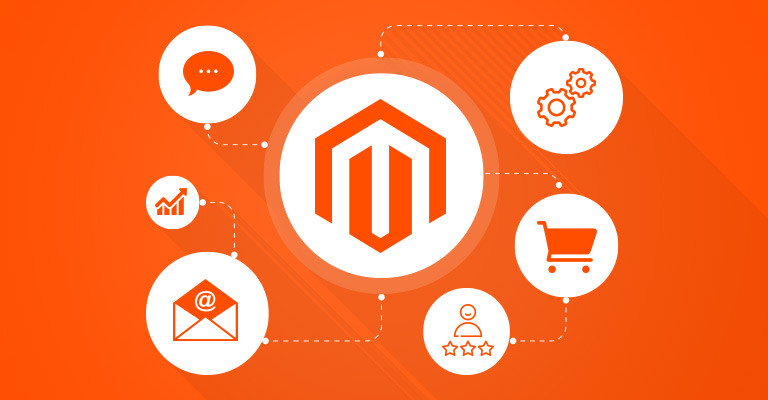
Magento is one of the most powerful and flexible eCommerce platforms, but with great power comes great responsibility. Security threats such as hacking attempts, data breaches, and malware attacks can pose significant risks to Magento stores. This is why Magento security maintenance is critical for ensuring the safety of customer data, transaction security, and overall site integrity.
In this article, we will explore the importance of Magento security maintenance, key security challenges, and best practices to keep your Magento store secure.
Why Magento Security Maintenance is Crucial
Running an online store involves handling sensitive customer information, including personal details and payment data. Any security lapse can lead to:
- Data Breaches – Compromising customer information, leading to loss of trust and potential legal consequences.
- Financial Loss – Cyberattacks such as card skimming can steal customer payments, affecting business revenue.
- Reputation Damage – A security breach can harm brand credibility, making customers hesitant to shop from your store.
- SEO Penalties – Google penalizes hacked sites, reducing search rankings and organic traffic.
Regular Magento security maintenance ensures your store remains secure, compliant, and protected from cyber threats.
Common Security Threats in Magento
Understanding the threats that Magento stores face is the first step in strengthening security. Some of the most common threats include:
1. Brute Force Attacks
Hackers attempt to gain access by trying multiple username-password combinations. Weak passwords make stores vulnerable to these attacks.
2. SQL Injection
Attackers insert malicious SQL queries into input fields to access or manipulate the database, leading to unauthorized data access.
3. Cross-Site Scripting (XSS)
Hackers inject malicious scripts into Magento websites, affecting both store functionality and user security.
4. Malware and Backdoors
Malicious software can infect a Magento store, stealing information or allowing hackers to control the site remotely.
5. Outdated Software Vulnerabilities
Running outdated Magento versions or extensions can expose security loopholes that hackers exploit.
Best Practices for Magento Security Maintenance
To keep your Magento store safe from cyber threats, implementing the following Magento security maintenance practices is essential:
1. Keep Magento Updated
Magento regularly releases security patches and updates to fix vulnerabilities. Always update your Magento store to the latest version to stay protected.
2. Use a Security Suite for Magento
A comprehensive security extension, such as the one available at Amasty, offers advanced protection against threats. Key features include:
✅ Two-Factor Authentication (2FA) – Adds an extra security layer for admin login.
✅ IP Whitelisting & Blacklisting – Restricts unauthorized access.
✅ Advanced Admin Activity Logging – Tracks suspicious activity in real-time.
✅ Malware Scanning – Detects and removes malicious files.
3. Implement Strong Password Policies
- Use complex passwords with a combination of letters, numbers, and special characters.
- Enforce periodic password changes for all admin accounts.
4. Secure the Magento Admin Panel
- Change the default admin URL to a unique one to prevent brute-force attacks.
- Restrict admin access to specific IP addresses.
5. Enable HTTPS and SSL Certificates
- Ensure your store runs on HTTPS to encrypt data transmission.
- Use SSL certificates to secure login pages, payment gateways, and customer accounts.
6. Regularly Back Up Your Store
- Maintain automated backups to recover data in case of an attack.
- Store backups securely in an offsite location.
7. Scan for Malware and Vulnerabilities
- Use security tools to scan your Magento store for malware, suspicious files, and vulnerabilities.
- Fix detected issues immediately to prevent exploitation.
8. Secure Customer and Payment Data
- Use PCI-compliant payment gateways to ensure safe transactions.
- Avoid storing sensitive customer payment information on your server.
9. Monitor User Activity and Logins
- Keep track of admin logins and activities to detect unauthorized access.
- Set up notifications for unusual login attempts.
10. Remove Unused Extensions and Modules
- Unused or outdated Magento extensions can introduce security risks.
- Regularly review and remove unnecessary third-party modules.
How a Security Suite Helps with Magento Security Maintenance
A security suite, like the one offered by Amasty, provides an all-in-one solution for Magento security maintenance. Instead of manually implementing security measures, store owners can rely on a robust extension to:
- Automate security updates and malware scans.
- Monitor admin activity for unauthorized access.
- Prevent brute force and SQL injection attacks.
- Strengthen store defenses with advanced firewall protection.
Using a security suite significantly reduces the risk of cyberattacks while ensuring compliance with industry security standards.
Final Thoughts: Prioritizing Magento Security Maintenance
ECommerce security is not a one-time task; it requires ongoing Magento security maintenance to stay ahead of threats. By keeping your store updated, using strong security practices, and leveraging security tools, you can protect your business and customers from potential cyber risks.
By investing in Magento security maintenance, businesses can safeguard their reputation, build customer trust, and ensure a secure online shopping experience.